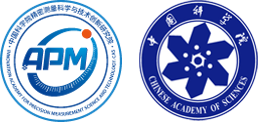

Science Foundation's "Telling Scientists' Stories"—Xin Zhou: Solid as a rock, realization of domestic equipment from scratch
At 12 o'clock on January 22, 2020, 10 hours before the lockdown of Wuhan, Xin Zhou decided to go back to Wuhan without hesitation while learning that COVID-19 patients mainly suffer from lung damage. His group’s self-developed hyperpolarized gas MRI equipment can achieve the non-invasive assessment of lung function injury, which may provide strong technical support for the battle of epidemic prevention. Xin Zhou, a professor in Innovation Academy for Precision Measurement Science and Technology, who led the group developed the first human lung gas magnetic resonance imaging instrument with the medical device registration certificate in the world, which broke through a series of technical problems. The instrument had made important contributions to the early diagnosis and treatment of patients with lung diseases. In 2020, Xin Zhou was selected as the "Chinese Academy of Sciences Innovative Person of the 2020 Year". He said, "Incorporating personal ideals into the great national development will surely accelerate the realization of the great dream of a strong science and technology nation."
After arriving in Wuhan, Xin Zhou paid all attention to the latest situation of the global epidemic of COVID-19. Xin Zhou submitted the "War Request" to the organization as soon as possible, hoping to bring lung gas magnetic resonance imaging equipment to "join the war". The equipment was applied to the front line of anti-epidemic patients such as Wuhan Jinyintan Hospital and Wuhan Tongji Hospital. More than 1000 patients with COVID-19 were comprehensively assessed for the microstructure and function of the lungs. It was found that although the lung CT images and the parameters of discharged patients’ lung function with common diseases were not abnormal, their gas MRI images showed slight impairment of ventilation function and obvious impairment of gas-blood exchange function. The ventilation and gas-blood exchange functions of most discharged patients with common diseases showed progressive improvement at the sixth month of follow-up. The research results have received high attention from international peers. Xin Zhou told "China Science Daily" that routine lung imaging detection methods all have ionizing radiation such as chest X-ray, CT, and PET. MRI is a non-invasive and non-radiation imaging modality that can image the structure and function of most tissues and organs in the human body. However, conventional MRI is 1H proton imaging, while the lung is a cavity structure with low hydrogen proton density, so it is impossible to visualize the lungs. Xin Zhou explained that it has always been his wish to "light up" the lungs and solve the problem that traditional MRI cannot clearly image the cavities of the lungs.
After 10 years of hard work, Xin Zhou led the group developed the human lung gas magnetic resonance imaging (MRI) instrument. In 2009, Xin Zhou returned to china. At that time, he needs to design the experimental program, install and commission the equipment by himself. In January 2011, In January 2011, Xin Zhou received support from the National Youth Science Foundation of China to complete a comprehensive research on magnetic resonance signal enhancement methods and independently developed a remote detection magnetic resonance device, which can further improve the detection sensitivity of magnetic resonance, and this research laid the relevant theoretical foundation for the instrument development. From one person to a team of 70 people, from "6 floor tiles" to a specialized laboratory, Xin Zhou led his team to live up to the expectations and achieved the breakthrough of China's lung gas magnetic resonance technology from scratch, effectively solving the scientific problems behind the bottleneck technology of non-destructive, quantitative and visualized detection of lung structure and function, breaking the foreign technological blockade and leading the world in core technical indicators.
"Instrument is a tool for understanding the world." In the past 100 years, the scientific development history has shown that major scientific innovations and the development of research are often guided by breakthroughs in scientific instruments and technical means. Xin Zhou said that major breakthroughs in modern science and technology rely more and more on advanced scientific instruments. Whoever has mastered the most advanced scientific instrument technologies and development technology will command the initiative of the technology development. During the five years of his Ph.D., he has often been repairing and reforming instruments and in the process he learned a lot of technical knowledge. Two months before his graduation defense, Xin Zhou had not published a paper, while other students had published papers at the third or fourth years. To his surprise, one month before the defense, he published three high-level papers based on the development of instruments. These experiences prove that persistence is most important, and once persistence breaks through the bottleneck, scientific research is sure to produce results! Nowadays, Xin Zhou often tells students that in scientific research, they should combine their personal interest with major scientific problems and social needs, to face the major needs of the country and society, to give back to society by solving practical problems, to maximize their personal value in the trend of national progress, and to truly realize the "Chinese dream" of scientific researchers in the new era.
Link: http://news.sciencenet.cn/htmlnews/2021/9/464785.shtm?bsh_bid=5636566707

Innovation Academy for Precision Measurement Science and Technology, CAS.
West No.30 Xiao Hong Shan, Wuhan 430071 China
Tel:+86-27-8719-8631 Fax:+86-27-8719-9291
Email:hanyeqing@wipm.ac.cn
鄂ICP备15017570号-1